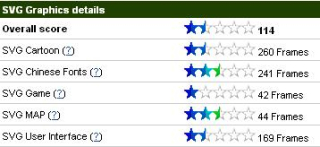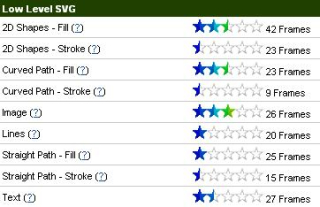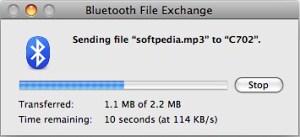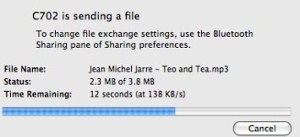The well-known Cyber-shot series developed by Sony Ericsson is getting more and more handsets almost each month of the year. Whether you prefer a high-end phone or a mid-level one, the above-mentioned series has it all. Sony Ericsson's portfolio of Cyber-shot mobile phones is almost huge, and sells all around the globe. The C702 handset was announced together with the more evolved C902, which features a 5 Megapixel camera, and is the answer to the mid-end camera phones on the market. Adding a built-in GPS receiver to the phone was also a smart move on behalf of Sony Ericsson, making the device more appealing to young, active people. Sony Ericsson C702 seems to be the first “splash and dust” resistant Cyber-shot handset. Even so, it does not stand apart from other members of the Cyber-shot series in terms of design.
Announced in February 2008, Sony Ericsson C702 was made available on the market in June, the same year. As a mid-level handset, C702 can be acquired for no more than 380 US dollars free of contract. Users can choose one of the three available colors: Speed Black, Cool Cyan and Energy Black.
Design
Sony Ericsson C702 doesn't stand out from the crowd and those that have previously had a Cyber-shot series handset won't be surprised by its looks. The classic bar factor, the almost identical curves, shapes and lines make C702 a totally “boring” device. Its rather big size (106 x 48mm) and thickness (15.5mm), as well as its weight (105g including battery), don’t recommend it as a pocket-sized device.
Besides its specific SE-like look, the C702 keypad layout resembles those of its Cyber-shot predecessors. Furthermore, being a dust and splash-resistant handset required the use of special materials, as well as a compact construction. Sony Ericsson C702 has been manufactured from a mix of rubber- and metal-like plastics. These are not making the device resistant to shocks and drops, but they weren’t supposed to anyway. The compound used also protects the handset from fingerprints, the only part exposed to soil being the screen. Even if fingerprints will cover the display in no time, at least it's well protected against scratches.
The keypad features the same layout as a usual Sony Ericsson handset, with a D-pad controller and other six keys, which activate certain basic functions of the phone. The Accept and Reject call keys look like two little knobs now, and are framed by other two sets of keys. A soft key and the usual Activity menu one are on the left side of the D-pad controller. To the right of the controller, there's another soft key and the backspace (C), which is mostly used as a Delete key. Handling the D-pad controller is easy and it features a rounded button in the middle as a selection key. The alphanumeric keypad has large spaces between the keys, but pressing them is still difficult. When the camera is used, 4 keys light up in blue, and can be used as shortcuts for various functions of the camera.
Otherwise, when activated, the backlighting is a combination of white (letters) and yellow (numbers). Near the bottom of the phone, below the keypad, there's a Cyber-shot logo, which is a trademark for all the handsets in this series. The left side of the bar features an M2 slot card for storage space expansion and a GPS logo. The right side of the device includes the volume keys, which can also be used to zoom in/out, and a dedicated camera key. The power button is on top of the phone, while on the bottom, users can find the usual proprietary Sony Ericsson port.
The back of the phone features an impressive 3.2 megapixel camera, protected by a lens cover. When the cover is slid down, it reveals a self-portrait mirror and the camera lenses. Above the camera is a dual LED flash, while below, users will notice a three-grid-like loudspeaker. If by any chance you're looking to open up the back cover, then you should unscrew the miniaturized plastic bolt. Hope you have fingernails. Near the small bolt, there's a special lanyard eyelet. If you're a climber, don't put high hopes on the resistance of the lanyard – the user guide says it.
Overall, the construction of the phone seems pretty sturdy and compact, but otherwise unimpressive. Users should also bear in mind that C702 hasn't been designed as a show-off phone – still, it compensates for that in terms of functionality.
Display and Camera
The 2.2-inch display of the device might seem a little small for web browsing, but it does its job. It supports 262K colors and 240x320 pixels resolution. Contrast and brightness are surprisingly good, but outdoor use is restricted by the fact that it's still not visible enough in strong sunlight. The screen seems to be well protected against scratches, but I wouldn't recommend keeping it in a pocket full of change. For more in-depth info regarding performance, check out the benchmarks below.
As a Cyber-shot series device, Sony Ericsson C702 features a powerful 3.2 megapixel camera with auto-focus, dual LED flash and video recording capabilities. Other cool functions include geotagging (“the process of adding geographical identification metadata to various media such as photographs and videos” – Wikipedia), Face detection and macro mode. The interface doesn't reveal anything new, but the innovation comes from the fact that some settings and functions can be quickly accessed from the numeric keypad.
As explained above, there are four numeric keypads with pictographs that designate different shortcuts to various functions of the camera. Key #3 opens up the Shoot mode, key #6 accesses the Scenes menu, key #9 activates the Self-timer, and key # activates the flash. Browsing through the menu of the camera, users will notice settings such as shooting mode (normal, panorama, frames, burst), scenes (auto, twilight landscape and portrait, landscape, portrait, beach/snow, sports, document), focus (auto, face detection, macro, infinite), self-timer, metering mode (normal, sport), white balance and effects.
Pictures taken with the camera are looking above average for a 3.2 megapixel one. Good contrast, vivid colors and a low level of noise make C702 one of the best Cyber-shot series devices in its class. The only drawback I noticed was the fact that the zoom keys are pretty hard to press. In terms of video recording, the device captures movies in QVGA resolution at 30fps in MPEG4 file format. Overall, Sony Ericsson C702 is way above its predecessors in terms of capturing pictures, and will definitely be a good choice for those looking for a camera phone.
Menu and Software
The specific Sony Ericsson user interface has been embedded into C702 as well, but some updates were made in terms of device personalization and looks. The same Media center introduced together with the K850i model has also been added to C702, but the auto-rotate feature has been left out. There's also support for Flash Lite 2.0, so users can now take advantage of various animated themes, but also some other Flash-based entertainment utilities. You get to choose from five different themes, each with its own specific abilities.
The main menu layout can be changed in accordance to the theme, or by choosing one of these options: grid, rotating and single icon. Wallpaper, startup screen and screen saver can also be personalized according to the user’s need. Also, there are seven profiles to choose from: Normal, Meeting, In car, Outdoors, Handsfree, Home, and Office. Besides these profiles, C702 also includes a Flight mode, in case users don't want to use the GSM functions of the handset.
There are few productivity tools that can be used, such as Alarms (limited to 5), Tasks, Notes, Calendar, Timer, Stopwatch, Calculator, Light, Video call, AccuWeather, FaceWarp, Code memo and a basic File manager. The Internet icon, as the name suggests, gives users access to basic Web browsing. The Radio only works when the wired earphones are inserted. Location services is the place where users can find some useful applications: Google Maps, Wayfinder Navigator and Tracker. The Entertainment sub-folder contains a few functions more or less specific to the Walkman series devices: TrackID, MusicDJ, PhotoDJ, VideoDJ, Record sound, Remote control and Games (Brain Juice and Foto Quest Fishing).
The Gallery can be found through the File manager in the folder called Camera album, or in the Media center, and can also be accessed through the camera interface menu. However, I noticed a bug when accessing the camera album directly through the Media center. When using the “Light trace” theme and accessing the Media center, if you want to go back to the main menu, the image will display the icons of the menu much smaller in the upper right side of the screen. If you immediately go to the wallpaper screen and then try again with the main menu, everything comes back to normal. This doesn't happen when using other themes, nevertheless.
The Java emulator works with just about any compatible application, like games or productivity software. Let's not forget the new service available from Sony Ericsson, Play Now, which offers maximum entertainment. Overall, SE's C702 user-interface offers quite a number of features and high functionality at a medium price.
Communication
Even if it's just a mid-end handset, Sony Ericsson C702 Cyber-shot features HSDPA 3.6Mbps technology, which greatly improves data transfers. When benchmarked, the phone attained 278 Kbit/s download and 279 Kbit/s upload in 3G network. EDGE data transfers were a little bit lower than expected, but still reached 111 Kbit/s download and 54 Kbit/s upload.
The handset is also compatible with Bluetooth 2.0 with A2DP technology, and features USB 2.0 (no charging), but lacks Infrared. I experienced data transfer speeds of up to 138 KB/s when sending files, and of 114 KB/s when receiving through Bluetooth connectivity, which is way above average.
The built-in GPS receiver makes a good addition for those active, young people, who are on the go most of the time. Applications like Google Maps and Tracker will come really in handy with localizations and keeping track of your sports activity. Unfortunately, I did notice an annoying latency of the GPS, even when the A-GPS function was activated.
Messaging capabilities have been improved, and now offer a wider range of options. All messages share the same Inbox, except for emails, which have a separate one. You can now manage and categorize your messages the way you want, or you can just simply use the pre-installed categories: Business, Favorites, Follow Up, Fun, Holiday and Important. The email service is fully compatible with the POP3 and SMTP clients.
The quad-band (GSM 850 / 900 / GSM 1800 / GSM 1900) network compatible handset has a good GSM signal reception. Unfortunately, when talking on the phone, there is no clarity, as I experienced low and muffled sound with this handset. Furthermore, the vibration is somewhat mediocre in intensity.
Processor and Memory
C702 Cyber-shot bar phone features a medium power ARM9 family processor that runs at speeds up to 180 MHz.
The CPU is powerful enough, so you can run multiple applications in the background with no problems whatsoever. The embedded Java emulator can handle any compatible large-size files (over 300KB), so 3rd party applications can be installed with ease.
The phone comes with 160 MB internal memory, but features micro M2 memory slot card to expand the storage space up to 8GB. It has been placed on the left side of the phone, and an M2 card can be inserted without the need of powering off the phone (hot-swappable).
Multimedia
Mixing high-end camera traits with music functions, Sony Ericsson C702 may be the answer for both music lovers and those looking for a good, cheap camera phone. The device offers almost the same quality in terms of music as a Walkman series one.
The new multimedia interface specific to K850i and C902 handsets, as well as the quality of sound of the music played make C702 Cyber-shot one of the good music phones in its class. The embedded Music Player 3.0 supports MP3, AAC, AAC+, E-AAC+, WAV, WMA, M4A and MIDI file formats, and takes advantage of a great Equalizer that includes settings such as MegaBass and Treble.
Even with the earphones (HPM-62) included, the sound is above average in terms of quality, but it still cannot be compared with any of the Walkman series. The FM radio supports RDS and can memorize up to 20 stations, while both radio and music player can be run in the background. Sony Ericsson C702 is definitely one of the best solutions for both: good pictures and good music.
Battery
Sony Ericsson C702 features a 950 mAh Li-Polymer battery, which has an official lifetime of approximately 300 hours in standby mode and 7 hours in talk-time mode. For a heavy user that spends 2-3 hours a day talking on the phone, it needs to be recharged once every two days, but a soft user should do just fine with one recharge per week. Music playback time is nearly of 18 hours with display in standby mode. Overall, this is a high quality battery of small dimensions that barely adds to the weight of the phone.
Impressions
C702 doesn't impress through design and looks, and it doesn't come with anything innovative in terms of features. Still, the phone is good value for money and may be the answer to many users that cannot afford the K850i or the C902. Otherwise, it could easily get lost in the rich “panoply” of Cyber-shot series, to which it belongs.
The Good
The Bad
Sales package
Sony Ericsson C702 Cyber-shot Charger USB Cable Stereo Headphones (HPM-62) Lanyard CD with Software Manuals
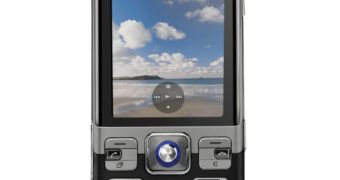
 14 DAY TRIAL //
14 DAY TRIAL // 






















